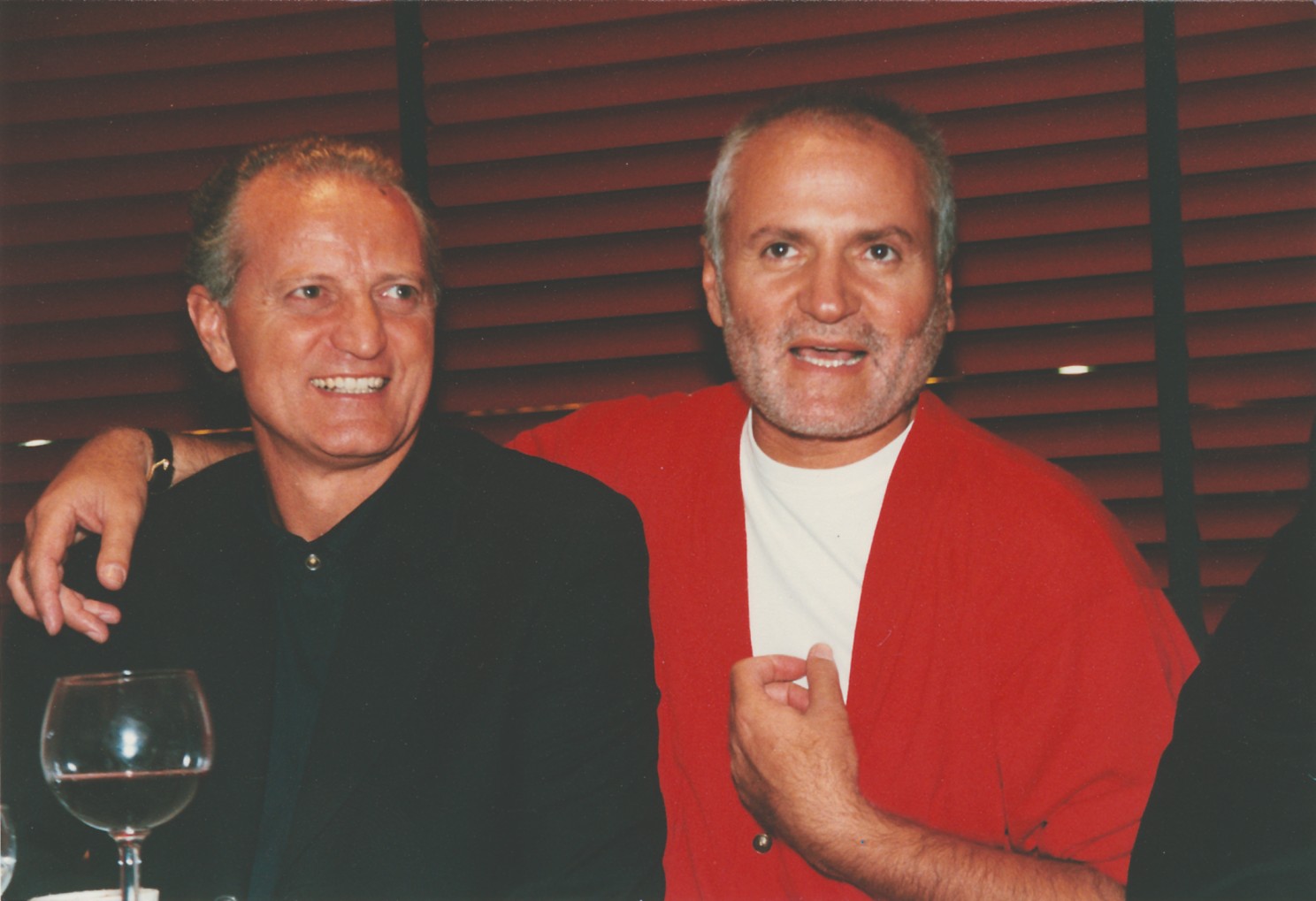His name is tied to a specific time. A time when the original supermodels walked up and down the runways of Italian creativity. Naomi Campbell, Cindy Crawford, Claudia Schiffer, Carla Bruni, Helena Christensen have all been muses of his.
Beautiful and untouchable, they seemed the sole protagonists of each show but, by bringing the world’s attention to them and feeding their haughty, temperamental myth, he in fact fed his own fame. In turn, Gianni Versace became an idol of Italian fashion. His brand still keeps together Italy and the US: the first, a synonym of creativity, sartorial excellence, elegance, style, originality, and attention to detail. The second, of a glamorous world we see in magazines, made of high-end mansions, star-studded parties, and international allure. And it shouldn’t surprise: in the end, his friends were Elton John, Prince, Sting, Madonna, and Lady Diana.
Gianni Versace brought his fashion house to world success in only a handful of decades and audacious, striking collections. He dared where others didn’t see modernity; he is a patrimony of originality and innovation, a celebration of all that is eccentric, extravagant, sensual, and baroque. With his contemporary hedonism, Versace deeply marked the 1980s and 1990s.
He became an interpreter of Milanese fashion: young, quirky, bold, brazen, metropolitan, so different and so far from the rest of the country, especially from Calabria, the most southern of all southern regions, the place he came from.
Still today, our whirling, fast-paced North and our slower, traditional South are cultural and social dimensions as different as black and white. Yet, Gianni’s company, which he created with his siblings Santo and Donatella, shows its deep connections with the family’s roots.
Thread and needle had been Gianni’s bread and butter since childhood: his mother was a seamstress and he grew up with lace and hems to mend in his hands, while watching embroideries and fabric taking shape on mannequins. He would become famous thanks to oroton, a tech fabric made with a special metallic mesh he used to create soft, light-as-a-feather gold and silver gowns. This mix between past and future, between good craftsmanship and letting the body be daring, was his creativity’s signature. His gowns could shape the form and substance of his VIP clients, and the best representation of it remains Lady D. who, after her divorce, wore Versace to show her social and inner change. For her, Gianni created the aesthetics of a woman who was finally free. He made her shine with a new light.
Because that’s the message of fashion, in the end: a dress is mirror to a state of mind; a wardrobe speaks of the person who owns it. I don’t know if you’ve ever thought about it, but the style we present ourselves to others says a lot about us. Similarly, a designer’s collection is not simply based on the next season’s trends: it’s the interpretation of a life vision, and it tries to understand and express the spirit of times.
The transformative sense Versace invented remained in his fashion house’s DNA: it’s all about evolving continuously while remaining truly recognizable. Because that’s exactly the duty of a high fashion brand: to emerge from the rest and stand out. It must be visible, different, recognizable, collection after collection, dress after dress, year after year. Gianni managed to do just that: he mixed together the most traditional idea of family – so typical of us Italians – with his creative and free spirit, a spirit perfectly able to embody made in Italy, personal ingenuity. and a fashionable, multi-cultural dimension.
This is Versace’s most defining element: a melting pot of contrasting aesthetics. His legacy lies in how he created, with savvy hands and a vivacious eye, a visual culture that celebrates contemporary society; in how he made clothes that became part of a whole era’s collective imagination.
Versace – whose fashion house remains a key player at every fashion week in the world thanks to the work of his sister Donatella – represents a slice of that italianità we should be proud of, and not only from a creative or entrepreneurial point of view. High fashion may not be for all pockets, but it does synthesize the spirits of an epoch, and this belongs to us all. It’s like a kaleidoscope through which we can see nuances, life and thought trends: in other words, it offers a sort of collective summary. With its wealth of designers and creative minds, artists and interpreters, Italy is an added value: it can add many a brushstroke to the portrait of our fast, brazen times.






























